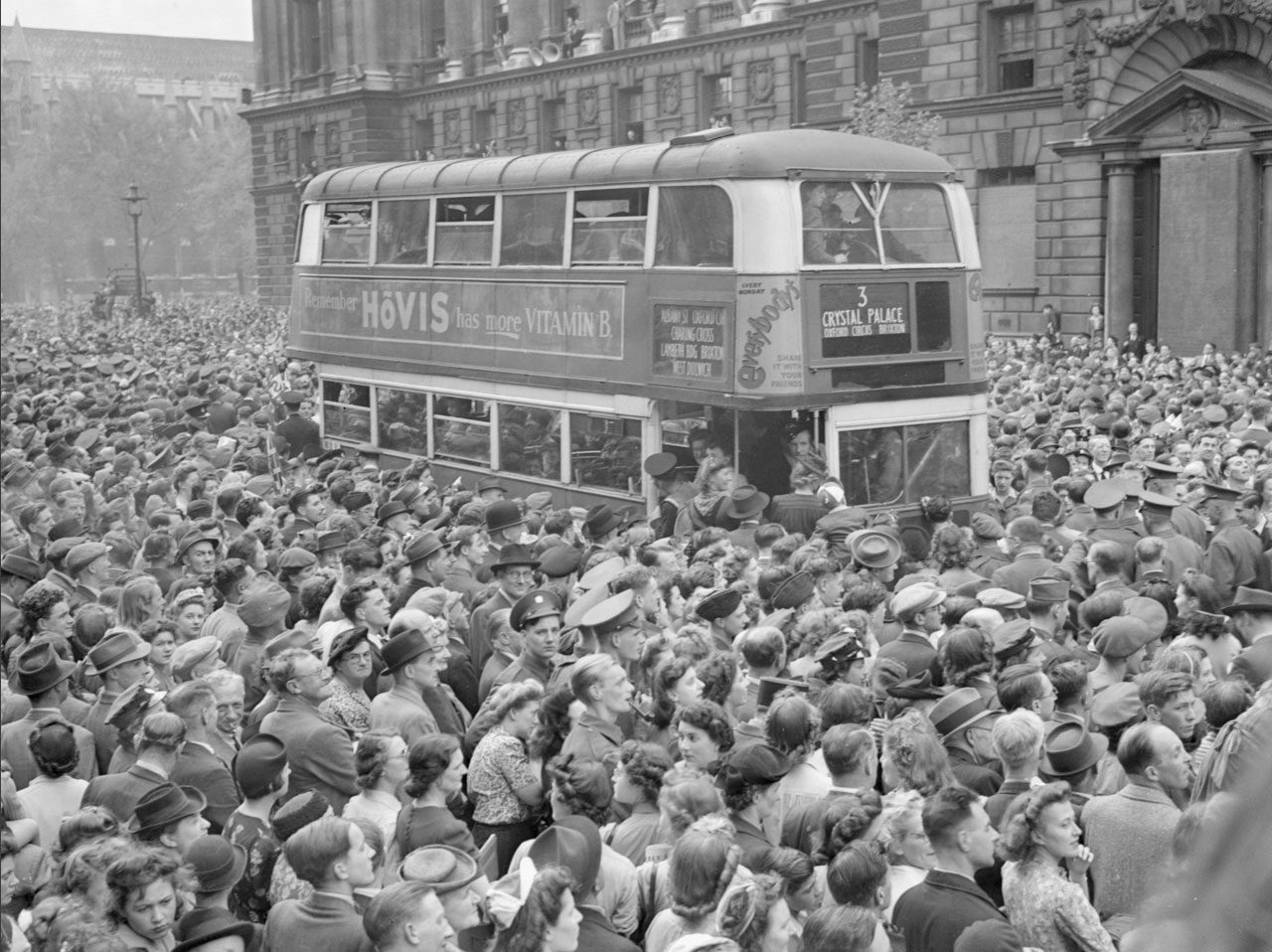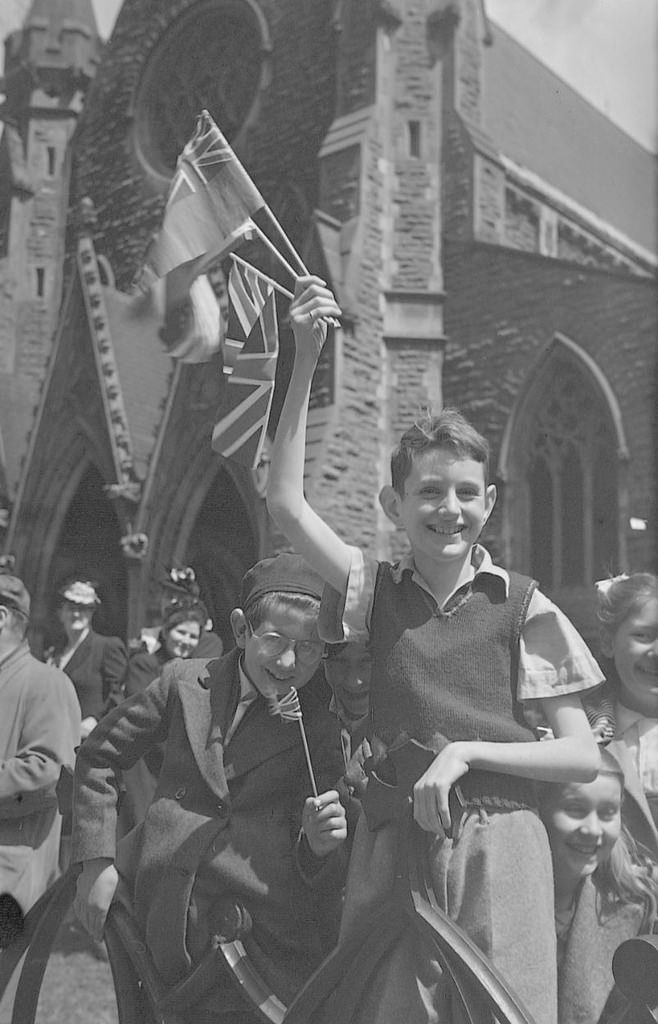Remembering Victory: The 78th Anniversary of V-E Day
As World War II raged on, millions of people around the world were anxiously waiting for the moment when the conflict would come to an end. That moment came on May 8, 1945, when the Allies celebrated Victory in Europe Day.
HOW WWII ENDED
V-E Day marked the end of the war in Europe, with Germany finally surrendering after 6 years of brutal fighting. However, the surrender of Germany was not a single event, but a series of events that took place over several days. The process began on May 1st, 1945, when British Field Marshal Montgomery’s 21st Army Group crossed the Elbe River and entered Germany from the west. With the German Army facing defeat on all fronts at that point, and with Hitler’s suicide on April 30th, it became clear that the Germans would have to surrender.
A German delegation arrived at Montgomery’s headquarters at Lüneburg Heath on May 4th. There, Montgomery accepted the unconditional surrender of German forces in the Netherlands, northwest Germany and Denmark. On May 7th, Supreme Allied Commander General Eisenhower accepted the unconditional surrender of all German forces at his headquarters in France. General Alfred Jodl signed the surrender document on behalf of Germany, and it went into effect the following day.

Field Marshal Montgomery meets with the German delegates seeking surrender terms outside his headquarters at 21st Army Group. May 4th, 1945.
The terms of surrender were harsh, but understandable given the atrocities committed by Nazi Germany during the war. The surrender required Germany to disarm its military, end all fighting in Europe, and turn over all war criminals to the Allies for prosecution. The Allies demanded that Germany accept full responsibility for the war and pay reparations for the damage caused.
However, Soviet Premier Joseph Stalin was unhappy with the terms of surrender, believing they were too lenient. He demanded a second signing in Berlin. This took place on May 8th, in the presence of representatives from the US, Great Britain, and the Soviet Union. General Jodl signed the document of unconditional surrender, which brought an official end to the war in Europe.
PUTTING WWII INTO PERSPECTIVE
The surrender of Nazi Germany was a significant moment in world history, as it marked an end to the most destructive war the world had ever seen. Here are some statistics about the war that help to put its scale and impact into perspective.
- Total number of casualties: Estimates vary, but it is believed that between 70 and 85 million people died as a result of the war. This includes both military and civilian casualties.
- Military casualties: It is estimated that between 22 and 25 million military personnel were killed during World War II. The Soviet Union suffered the highest number of military casualties, with an estimated 8.7 million soldiers losing their lives.
- Civilian casualties: The number of civilian casualties during World War II is difficult to determine, but it is believed to be around 45 million people. This includes those killed in bombings, massacres, and other atrocities committed by both the Axis and Allied powers.
- Holocaust deaths: The Holocaust was the systematic extermination of approximately 6 million Jews by Nazi Germany during World War II. This number also includes other groups that the Nazis deemed “undesirable,” such as Roma, homosexuals, and disabled individuals.
- Economic impact: Though WWII lasted about 6 years, it was the most expensive war in history. Adjusted for inflation, the war may have cost anywhere from 1 trillion dollars to 4 trillion dollars.
- Displaced persons: Millions of people were displaced during WWII, with many forced to flee their homes and seek refuge in other countries. The war resulted in the largest displacement of people in human history, with an estimated 60 million people being forcibly relocated.
V-E DAY CELEBRATIONS
The celebrations that followed V-E Day were nothing short of euphoric. In cities across the world, people poured into the streets to celebrate the end of the war.
In London, crowds gathered in Trafalgar Square, where they waved Union Jacks, sang patriotic songs, and waited anxiously to hear the announcement from Prime Minister Winston Churchill. The King and Queen also made an appearance on the balcony of Buckingham Palace, to cheers and applause from the crowds below.

A double-decker bus slowly pushes its way through the huge crowds gathered in Whitehall to hear Churchill’s Victory speech and celebrate Victory in Europe Day. The crowd is a mix of service personnel, civilians and children. London, England, UK. May 8, 1945.
In Paris, which had been occupied by the Germans for 4 years, people flooded the streets to celebrate. The Eiffel Tower was lit up with the colors of the French flag, and the city’s famous landmarks were decorated. People danced in the streets and sang the French national anthem, “La Marseillaise.”
The celebrations weren’t just confined to the streets, though. Churches and synagogues around the world held special services, and many people gathered in their homes to celebrate with friends and family.

Children celebrating V-E Day outside of church in Montreal, Quebec, Canada. May 9, 1945.
THE 78TH ANNIVERSARY
While V-E Day was undoubtedly a time for celebration, it was also a time for reflection. Millions of people had lost their lives in the war, and the world had been irreversibly changed by the conflict. As the Allies celebrated their victory, they also began the difficult process of rebuilding and moving forward.
For many people, V-E Day was a reminder of the power of hope and perseverance. Despite years of hardship and tragedy, the Allied Powers had managed to overcome seemingly insurmountable obstacles and emerge victorious. Today, V-E Day serves as a reminder of the countless sacrifices made by service members and civilians alike during WWII. After 78 years, we reflect on this historic day and honor those who lost their lives. Join Charlie Mike in observing this important day.




